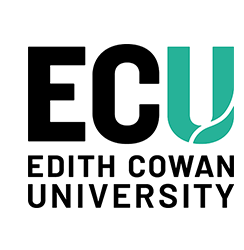Author Identifier (ORCID)
Cody J. Wilson: https://orcid.org/0000-0001-6310-8471
João Pedro Nunes: https://orcid.org/0000-0001-8144-5906
Anthony J. Blazevich: https://orcid.org/0000-0003-1664-1614
Abstract
Background: While muscle contractility increases with muscle temperature, there is no consensus on the best warm-up protocol to use before resistance training or sports exercise due to the range of possible warm-up and testing combinations available. Therefore, the objective of the current study was to determine the effects of different warm-up types (active, exercise-based vs. passive) on muscle function tested using different activation methods (voluntary vs. evoked) and performance test criteria (maximum force vs. rate-dependent contractile properties), with consideration of warm-up task specificity (specific vs. non-specific), temperature measurement method (muscle vs. skin), baseline temperatures, and subject-specific variables (training status and sex). Methods: A systematic search was conducted in PubMed/MEDLINE, Scopus, Web of Science, Cochrane, Embase, and ProQuest. Random-effects meta-analyses and meta-regressions were used to compute the effect sizes (ES) and 95 % confidence intervals (95 %CIs) to examine the effects of warm-up type, activation method, performance criterion, subject characteristics, and study design on temperature-related performance enhancement. Results: The search yielded 1272 articles, of which 33 met the inclusion criteria (n = 921). Increasing temperature positively affected both voluntary (3.7 %/°C ± 1.8 %/°C (mean ± SD), ES = 0.28 (95 %CI: 0.14 to 0.41)) and evoked (3.2 %/°C ± 1.5 %/°C (mean ± SD), ES = 0.65 (95 %CI: 0.29 to 1.00)) rate-dependent contractile properties (dynamic, fast-velocity force production, and rate of force development (RFD)) but not maximum force production (voluntary: –0.2 %/°C ± 0.9 %/°C (mean ± SD), ES = 0.08 (95 %CI: –0.05 to 0.22); evoked: –0.1 %/°C ± 0.8 %/°C (mean ± SD), ES = –0.20 (95 %CI: –0.50 to 0.10)). Active warm-up did not induce greater enhancements in rate-dependent contractile properties (p = 0.284), maximum force production (p = 0.723), or overall function (pooled, p = 0.093) than passive warm-up. Meta-regressions did not reveal a significant effect of study design, temperature measurement method, warm-up task specificity, training status, or sex on the effect of increasing temperature (p > 0.05). Conclusion: Increasing muscle temperature significantly enhances rate-dependent contractile function (RFD and muscle power) but not maximum force in both evoked and voluntary contractions. In contrast to expectation, no effects of warm-up modality (active vs. passive) or temperature measurement method (muscle vs. skin) were detected, although insufficient data prevented robust sub-group analyses.
Document Type
Journal Article
Date of Publication
12-1-2025
Volume
14
PubMed ID
39864808
Publication Title
Journal of Sport and Health Science
Publisher
Elsevier
School
School of Medical and Health Sciences
Funders
Edith Cowan University
Creative Commons License

This work is licensed under a Creative Commons Attribution-Noncommercial-No Derivative Works 4.0 License.


Comments
Wilson, C. J., Nunes, J. P., & Blazevich, A. J. (2025). The effect of muscle warm-up on voluntary and evoked force-time parameters: A systematic review and meta-analysis with meta-regression. Journal of Sport and Health Science, 14, 101024. https://doi.org/10.1016/j.jshs.2025.101024